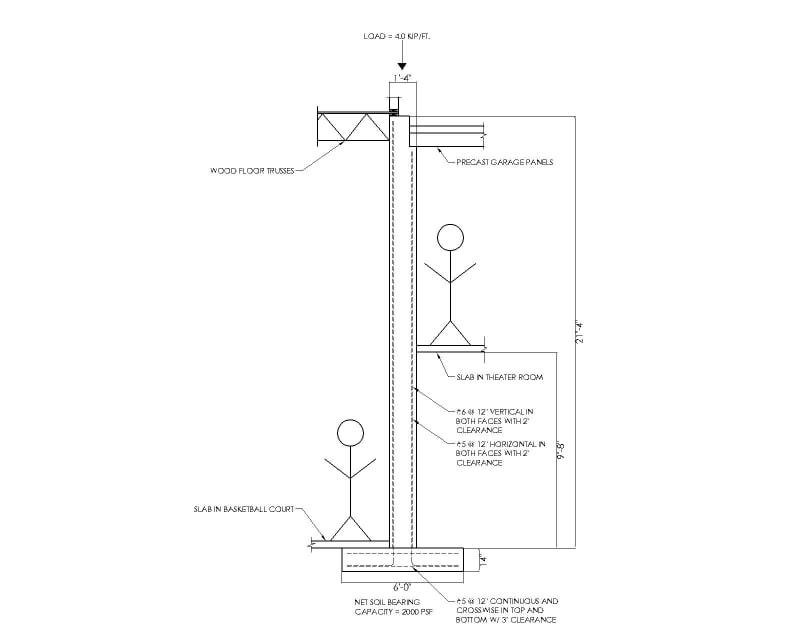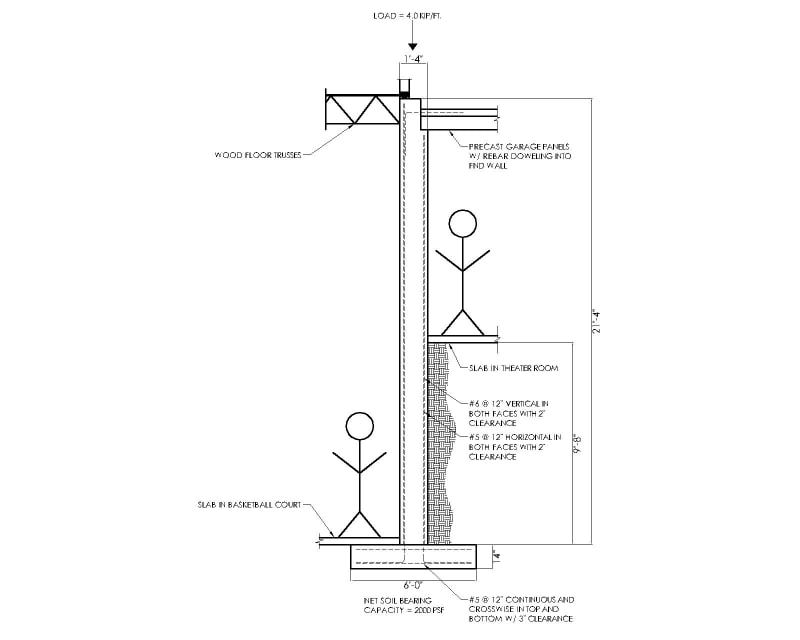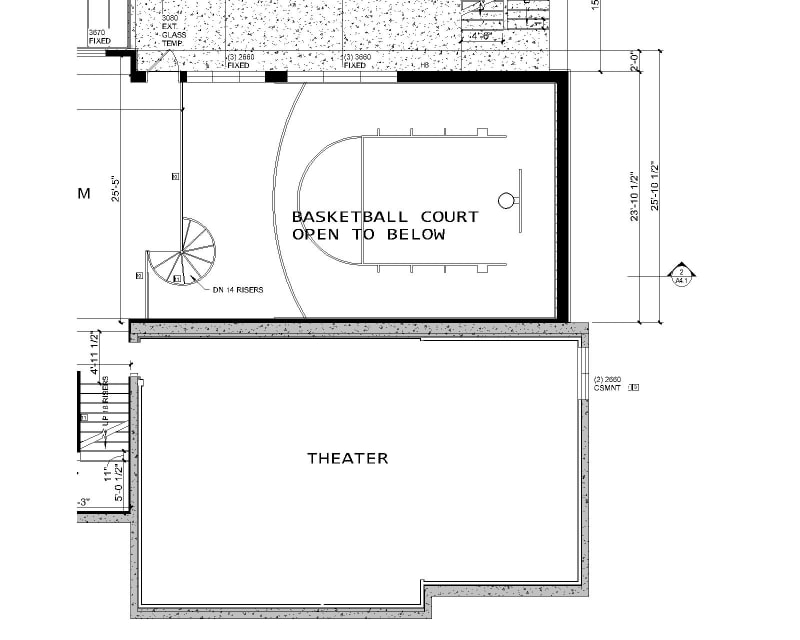Apache1
Structural
- Dec 14, 2021
- 31
Hi everyone. I have a couple of questions on this foundation wall I am designing that separates a basketball court and a higher theater room in a home. See the drawing below for relevant dimensions and design criteria. I have read all the previous threads I could find on this topic but still have some lingering questions I'd like to run past you all.
1 - I have designed this wall in a few different software programs and have come up with the drawing below based on the results from all of these programs. Each program has options to design the wall as "fixed" at the base or "pinned". If I design the wall as pinned then the required footing size approaches 12' wide or more. In my opinion a 12' wide footing is ridiculous and any contractor building this home would laugh in my face. Therefore I design the base as fixed to get a more reasonable footing size at 6' wide. Does this sound like a reasonable approach?
2 - I have a question on whether it matters which way the dowel bars bend once they go down into the footing. A couple of the programs I use provide a visual result showing the completed design. One of these programs shows the bars bending the way I show them in my sketch below. The other program shows the bars bending the opposite direction. Does it matter?
3 - Do you have any other input on my sketch?

1 - I have designed this wall in a few different software programs and have come up with the drawing below based on the results from all of these programs. Each program has options to design the wall as "fixed" at the base or "pinned". If I design the wall as pinned then the required footing size approaches 12' wide or more. In my opinion a 12' wide footing is ridiculous and any contractor building this home would laugh in my face. Therefore I design the base as fixed to get a more reasonable footing size at 6' wide. Does this sound like a reasonable approach?
2 - I have a question on whether it matters which way the dowel bars bend once they go down into the footing. A couple of the programs I use provide a visual result showing the completed design. One of these programs shows the bars bending the way I show them in my sketch below. The other program shows the bars bending the opposite direction. Does it matter?
3 - Do you have any other input on my sketch?



